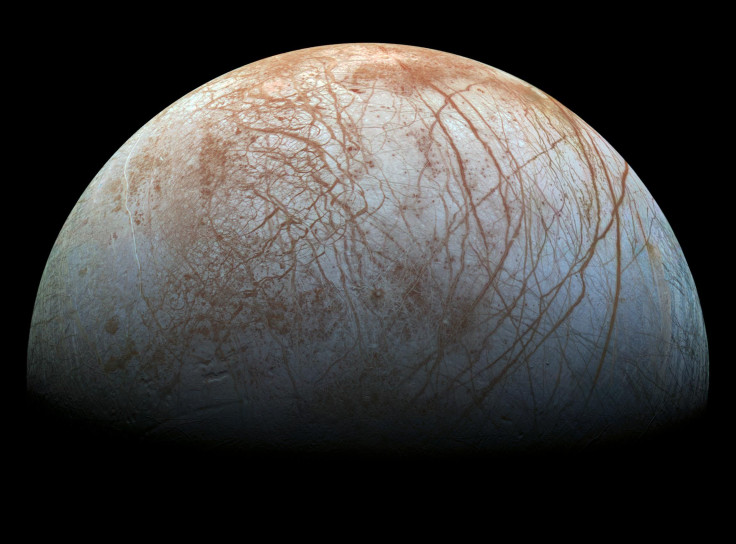Could Jupiter’s Icy Moon Europa Have Life Powered By Nuclear Energy?

Among the places within our solar system that could potentially support life as we know it (other than Earth, of course), Jupiter’s icy moon Europa is one of the prime candidates. New research by a team of Brazilian researchers indicates native life-forms on the solar system’s sixth-largest moon, if they exist, could be powered by nuclear energy.
With its surface covered in a thick layer of ice, thought to be about 10 kilometers (6.2 miles) deep, and a warm subsurface ocean estimated to be 10 times deeper, Europa is also the target of an upcoming NASA mission, called Europa Clipper, designed to study the icy world’s habitability. The findings made by researchers from the University of Sao Paulo may help that mission.
“We studied the possible effects of a biologically usable energy source on Europa based on information obtained from an analogous environment on Earth,” principal investigator Douglas Galante from USP and one of the paper’s coauthors, told Agência FAPESP in an interview Wednesday.
This “analogous terrestrial context” the researchers studied was deep inside a gold mine in South Africa. The bacterium Candidatus Desulforudis audaxviator lives almost 3 kilometers below the surface inside the Mponeng gold mine near Johannesburg, completely devoid of sunlight and lacking in oxygen. In the high temperature conditions, it uses energy from a radioactive process that involves the splitting of water molecules due to ionizing radiation.
Galante explained the process involved: “This very deep subterranean mine has water leaking through cracks that contain radioactive uranium. The uranium breaks down the water molecules to produce free radicals [H+, OH-, and others]. The free radicals attack the surrounding rocks, especially pyrite [iron disulfide, FeS2], producing sulfate. The bacteria use the sulfate to synthesize ATP [adenosine triphosphate], the nucleotide responsible for energy storage in cells. This is the first time an ecosystem has been found to survive directly on the basis of nuclear energy.”
Europa has similar conditions. Its elliptical orbit around Jupiter leads to a periodical change in its geometry, elongating when it is close to the gas giant and relaxing when it moves away. That creates internal heat which keeps the subsurface water warm. And the chemical imbalances that translate into biological energy could come from radioactivity.
Like all terrestrial bodies, Europa is thought to contain radioactive materials too, remnants from supernova explosion that led to the creation of the solar system itself. The amount of specific radioactive elements, like uranium, thorium and potassium, on Europa can be estimated using known measurements of their occurrence on Earth, Mars and in meteorites. Based on that estimate, and the presumed presence of pyrite, the researchers said “the existence of radioactive material in fairly realistic quantities would in and of itself be very strongly conducive to the emergence of life on Europa.”
“The ocean bed on Europa appears to offer very similar conditions to those that existed on primitive Earth during its first billion years. So studying Europa today is to some extent like looking back at our own planet in the past. In addition to the intrinsic interest of Europa’s habitability and the existence of biological activity there, the study is also a gateway to understanding the origin and evolution of life in the universe,” Galante said.
Titled “Microbial habitability of Europa sustained by radioactive sources,” the open-access study appeared online in January in the journal Scientific Reports.
© Copyright IBTimes 2024. All rights reserved.











